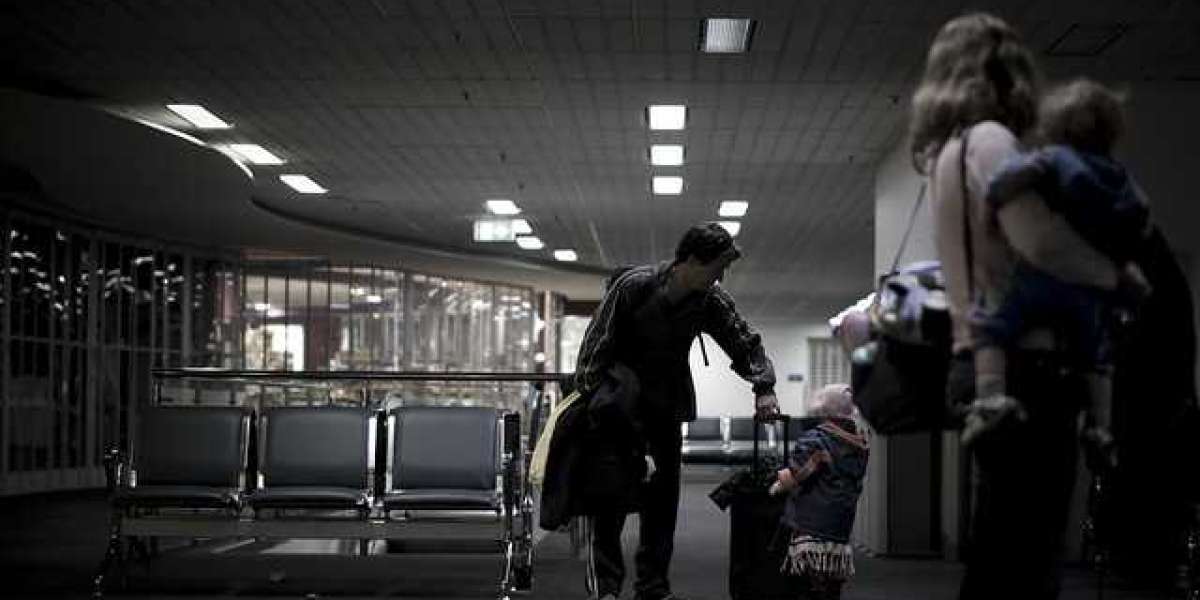If you are over 50, have plenty of free time, are in good health, and have some spare income, you are likely to be interested in traveling. One of the most crucial considerations you will have to make is which luggage to bring with you on your trip. You can ruin your entire experience if you make the wrong decision at the beginning. The best travel luggage for seniors are those that are built to be as light as possible without compromising on strength or durability. The types of handles and wheels that are presently being used make them significantly more controllable than they were previously.
Size
One of the first things you should think about is whether or not you want to bring a small luggage. This does imply that you must be more strategic in your packing, but the benefit is that managing your luggage is significantly less difficult. When you buy a larger luggage, there is a natural inclination to fill the space just because it is available. My mother, who was 82 at the time, was traveling for a few months in the United Kingdom to visit my brothers, and she had a huge bag with her. I'll never forget that image. When she returned, she admitted that she had made a serious error.
It goes without saying that the size you select will be determined by considerations such as the length and nature of your journey. Many individuals choose to travel with a luggage that is tiny enough to be used as a carry-on in order to avoid the long lines at the airport check-in counter. Even if you have difficulty lifting a suitcase into an overhead locker, the flight attendants in the cabin will be pleased to assist you. It is more convenient for me to utilize a check-in suitcase because I find it difficult to lift luggage into the overhead compartment and because I don't like waiting for airline service members to help.
Weight
Everything today is marketed as "lightweight," but it is critical to verify the exact weight before purchasing. If you have a rolling suitcase, you still have to carry it from time to time, which means the lighter it is, the more convenient it is. Ideally, the majority of the weight should be borne by the clothes inside the bag, rather than by the suitcase itself. Experts recommend that an empty luggage should not weigh more than 7.5 pounds (3.4 kilograms), and many of the suitcases on the market now fall into this category.
Space
Even among the most lightweight luggage, some have a greater carrying capacity. A excellent option is one that can be expanded. Packing cubes assist you to organize your space - a set of four cubes – slim, small, medium, and large – makes it easier to put your belongings in their proper places. It is possible to group products that are similar together, making it easier to find what you need without having to rummage through your entire bag.
Mobility
Use of old luggage that you have owned for many years means that you are not taking advantage of the most recent technological advances available. Rolling suitcases are being developed that make moving a baggage easier and more efficient than before. This could mean the difference between spending your entire vacation recuperating from injuries and being able to handle your luggage with ease and confidence.
Materials of high quality
When it comes to purchasing a luggage, it makes no sense to cut down on the quality of the materials used.
Fabric
There isn't a single best material for a luggage that can be identified. It is possible to find them in a variety of materials such as ballistic nylon, polyester, aluminum, leather, and polycarbonate. Each substance has its own set of advantages and disadvantages. For example, leather is extremely durable, but it is also extremely heavy. Blends or "poly" materials are less durable than pure materials, and polyester is frequently utilized in lower-priced ranges. Hard-sided suitcases are lighter in weight than ever before, and soft-sided suitcases are more durable than ever before, so today's travelers have a lot of options when it comes to choosing between the two types of baggage. Fabrics like as ballistic nylon and cordura are the most popular alternatives for soft-sided bags. Aluminium and polycarbonate are the most commonly utilized materials in the production of hard-sided containers.
Handles
With a telescopic suitcase that has an extensible handle, you can wheel your suitcase around with just one hand! The telescoping handle may be adjusted to a variety of lengths before being locked into position. The greatest extension must be appropriate for your height in order for your back to be protected from strain.
Easy carry handles on the top or side of the suitcase, allowing you to raise it in the direction that is most comfortable for you, should also be included. Wrists and arms will be relieved of stress if the handle is comfortable.
Wheels
Suitcases have been equipped with little wheels that employ the same technology as in-line skates for many years. They are attached to the case's side and only roll in one direction. Pulling your bag behind you is made possible thanks to these wheels.
Newer types include four wheels that can move in all directions, rather than only back and forth, as in previous models. You can wheel your bag alongside you using these devices, which are referred to as'spinners.' Due to the fact that they do not have to be tilted and pulled along behind you, they are easier to maneuver, especially in confined areas. Some people are against spinners because they believe they glide away from you on an incline and are unsuitable for any surfaces other than airport runways and concourses. The greatest spinners, on the other hand, do not have these issues.
When it comes to wheels, the most vital factor to consider is their dependability. In order to avoid wheel failure, you must ensure that your wheels are powerful enough to wheel over uneven terrain if necessary, as well.
Color
It is beneficial to have a luggage that is immediately distinguishable so that you can locate it quickly. When you're at the carousel, wearing a bright color can help you avoid getting lost. If you like a more traditional color, such as black or blue, it's simple enough to add a brightly colored tag to your bag. Even a brightly colored scarf tied around the handle of your suitcase can assist you in identifying it.
Pockets
A lightweight jacket or sweatshirt, as well as a folding travel umbrella, can be stored in an outer pocket. As a result, you will be well prepared for any unexpected changes in weather conditions.
Zippers
The most common luggage zippers available today are coil zippers, which are flexible and easy to work while remaining durable and reliable. They are made up of two coils on each side, which are stitched to the zipper tape, and the teeth are generated by winding the coils around each other. Among the most durable zippers available are chain zippers with individual locking teeth fused to the zipper tape; nonetheless, they are more expensive and less flexible than other types of zippers. A closed-end zipper that opens up at both ends and then comes together in the center is the most practical variety since it allows you to continue using the luggage even if one of the zippers fails completely.
Cost
It goes without saying that price is a consideration in your decision; however, it is not worth it to purchase a low-cost suitcase only to be frustrated by a broken zipper or uneven wheels. Traveling may be taxing on your belongings. On the other hand, there is a happy medium, and it is not essential to spend a fortune in order to achieve this. A high-quality luggage will most likely cost between $250 and $300, and it is not necessary to spend any more than that amount for one.



